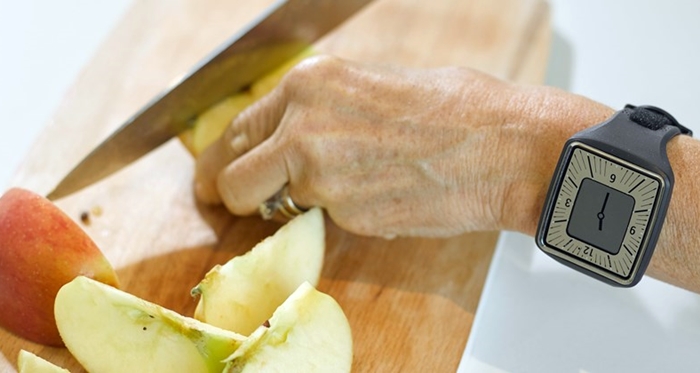11 Apr. 2019. A university in the U.K. designed a home-based care plan for people with Parkinson’s disease that uses a smartwatch device to monitor their conditions. The home care plan developed by a team from University of Plymouth and affiliated hospitals is funded by foundation grants totaling £90,500 ($US 118,400).
Parkinson’s disease occurs when the brain produces less of the amino acid dopamine, a neurotransmitter that sends signals from one neuron or nerve cell to another. As the level of dopamine lowers, people with Parkinson’s disease become less able to control their bodily movements and emotions. Among the symptoms encountered by people with Parkinson’s disease are slower than normal movements and fewer automatic movements like blinking, called bradykinesia, and involuntary, erratic, writhing movements of the face, arms, legs, or trunk, known as dyskinesia.
The Developing Home-based Parkinson’s Care project at Plymouth aims to fill gaps in care offered to people with Parkinson’s disease that result from the complexity of the disorder and isolation of many people with the condition. The university says current guidelines in the U.K. call for each patient to receive a specialist review every 6 months, but recent statistics show almost half (46%) of people with Parkinson’s delay their appointments, and even more — 6 in 10 — did not see a community nurse in the previous year. And some of the more remote regions in the U.K. have no Parkinson’s specialist services.
A team led by neurologist Camille Carroll in Plymouth’s Institute of Translational and Stratified Medicine aims to fill these gaps with the help of a device called the Parkinson’s KinetiGraph or PKG system made by Global Kinetics Corporation in Melbourne, Australia. The PKG system consists of sensors packed into a watch-like device worn on the wrist. The sensors collect data on movements of people with Parkinson’s disease, then process the data with an algorithm monitoring signs of tremor, bradykinesia, and dyskinesia, as well as daytime drowsiness and impulsive behaviors, also symptoms of Parkinson’s disease. The device can provide as well reminders to wearers to take their medications.
People with Parkinson’s disease wear the PKG system for 6 days, then the data are uploaded to Global Kinetics, where they’re transformed to a statistical and graphical report for clinicians. Carroll and colleagues plan to use the data, as well as results of questionnaires for patients reporting on other symptoms,, such as their moods, to develop care plans that work for individuals with Parkinson’s disease. The plans are supplemented with educational materials to help participants better manage their conditions.
The project team expects the new care plan will take from hospitals the burden of tracking patients with Parkinson’s disease and reduce the often-difficult travel to clinics by people with the disorder. “The new project is designed to reduce the burden of attending hospital clinics,” says Carroll in a university statement, “improve motor and non-motor Parkinson’s symptoms, ensure appropriate and timely contacts to health-care services, and result in improved quality of life for people with Parkinson’s and their carers.”
Carroll tells more about the project in the following video.
- Brain Stimulator Device Cleared for Depression, Insomnia
- App Created for New, Pregnant Moms in Opioid Recovery
- Virtual Reality Coupled with EEG for Autism
- NIH Funds Natural Hearing Restoration Technology
- Fox Foundation Supports Parkinson’s Walking Device
* * *


 RSS - Posts
RSS - Posts
[…] Smartwatch Monitor Boosts Parkinson’s Care […]